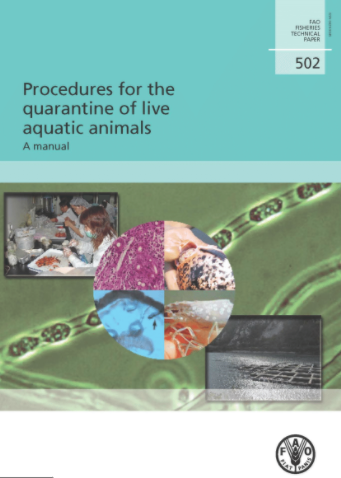Procedures for the quarantine of live aquatic animals: a manual

Quarantine is an important risk management measure and a key activity that should be considered when developing national strategies for aquatic animal health management. It can also be used effectively to increase biosecurity at the farm production level.
This manual outlines the technical requirements for setting up quarantine facilities at three levels, based on the general level of risk (as determined by risk analysis) represented by the specific consignment of aquatic animals being moved: (i) the quarantine of “high risk” species (e.g. aquatic animals being moved either internationally through introductions and transfers or domestically between regions of different health status that are destined for use in aquaculture, capture fishery development or other applications where release or escape of animals or any pathogens they may be carrying into the natural environment is likely to occur; (ii) the quarantine of “lower risk” species (e.g. aquatic animals destined for the ornamental trade) to improve biosecurity for aquatic animals whose trade is an established practice; and (iii) the routine quarantine of aquatic animals at production facilities (e.g. new, domestically produced or locally captured broodstock or juveniles or animals whose movement has been contingent upon additional, more stringent, risk management measures, such as the use of Specific Pathogen Free stocks, international health certification, pre-border and/or border quarantine, etc.).
This manual should be useful to government policy-makers and responsible national and state agencies in assessing their need for quarantine capacity and in implementing aquatic animal quarantine in an effective and cost-efficient manner within the framework of national and state aquatic biosecurity programmes. It also provides useful guidance to responsible agencies, their technical staff, and the private sector in setting up of effective quarantine facilities and their daily operation.